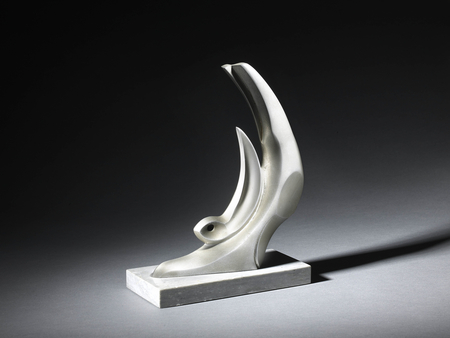Product Description
7407 Kobayashi Shōmin (1912-1994)
An aluminium sculpture in the form of a stylised usagi (hare).
Signed: Shōmin
Japan 20th century Shōwa period
Dimensions: H. 23.5cm x W. 19.5cm x D. 9cm (9½” x 7¾” x 3¾”)
Kobayashi Shōmin (1912-1994) was originally from Aomori prefecture in Northern Honshū, and later lived and worked in Kyoto. In 1941 he exhibited his work at Nitten (The Japan Fine Arts Exhibition) and went on to become a Nitten judge.
Kobayashi started metalworking at a young age in Kyoto under Kuroi Kōmin. Both men came originally from Aomori. He received the last character of his name ‘min’ from his teacher.
He was accepted at the Nitten in 1940 where his work was bought for the first time by the Japanese government. Thereafter he exhibited at this show every year winning two major prizes in 1953 and 1963. He was a judge at this exhibition in 1940 and served in the same in the same role for other public exhibitions orginised by Shiga City and Ōtsu city. In 1977 Kobayashi held a joint exhibition in Aomori with his three sons, who show their artistic talents in three different fields: cast metalwork, pottery and textile dyeing.
Utilising the unconventional medium of aluminium, Kobayahsi created original works inlaid with stylised designs.
The usagi (hare or rabbit) and the moon are often linked in East Asian folklore. Japanese legends describe the shadows on the surface of the moon as hares pounding mochi (sticky rice) cakes while an ancient Chinese Taoist tale tells of a hare that resides in the moon and pounds magic herbs in order to make the elixir of eternal life. In Japan the full moon and the hare have become associated with autumn, a time when the moon is deemed to shine brightest. The hare is also associated with the sea and high tides, another natural phenomena caused by the lunar cycle.








